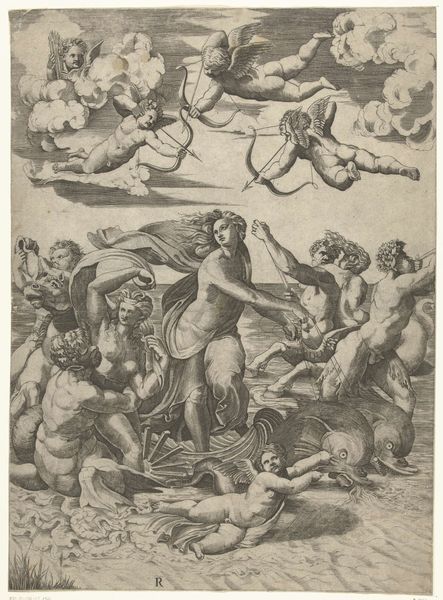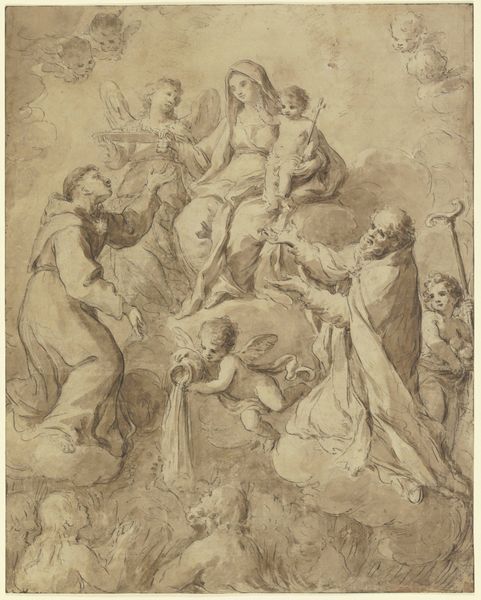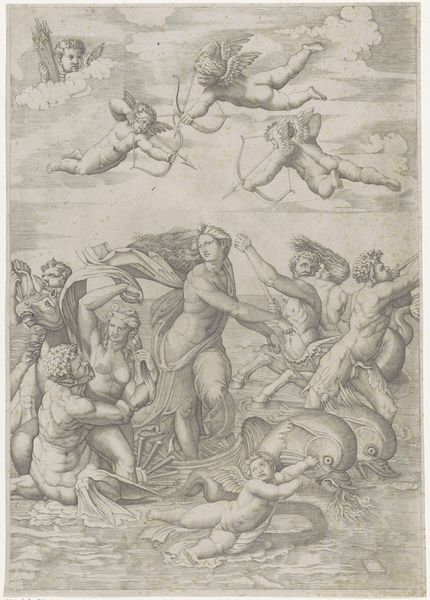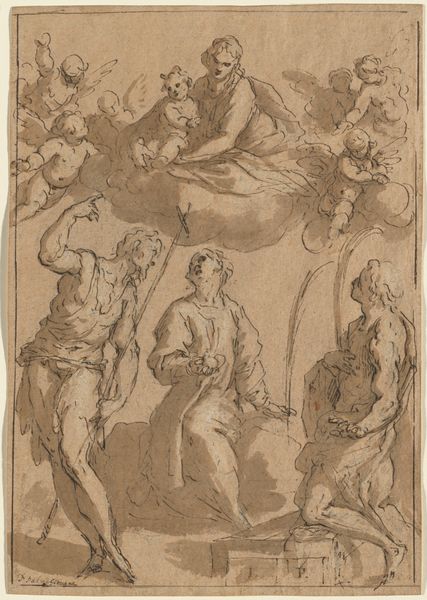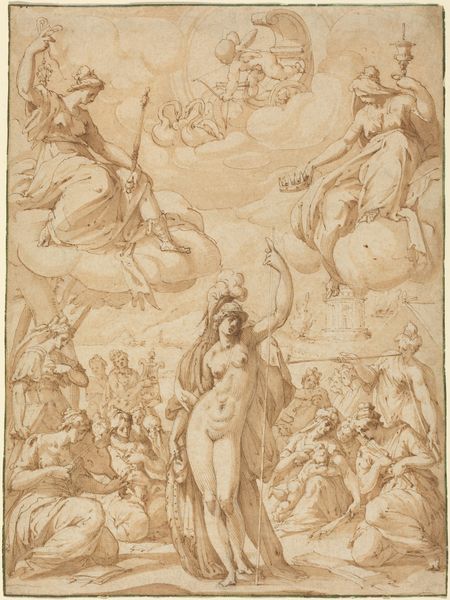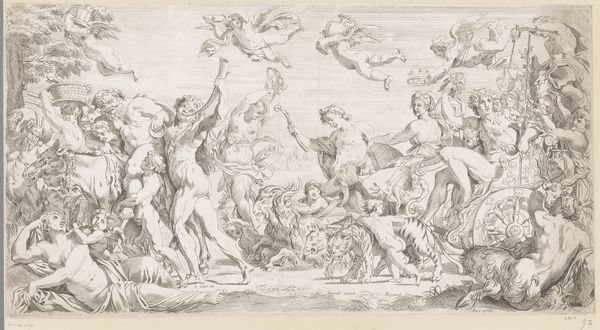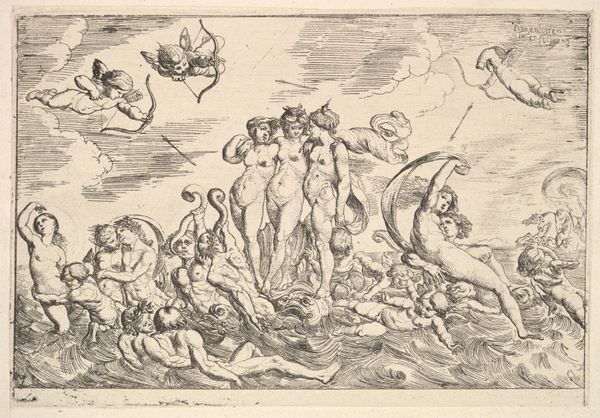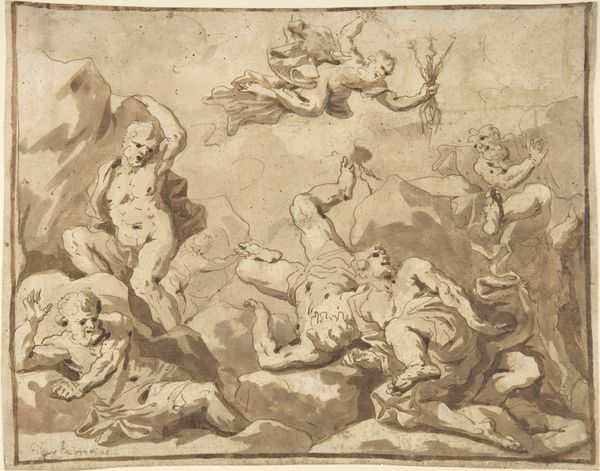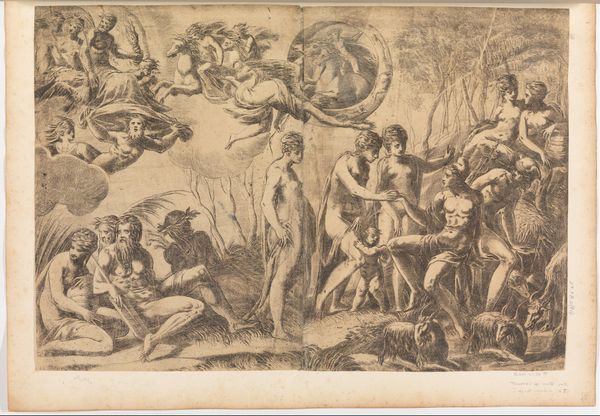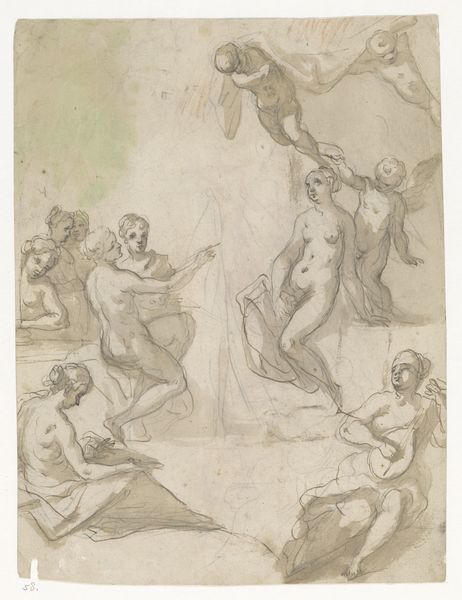
Galatea riding in a shell pulled through the water by dolphins, a cupid below and four more above, at left a triton embracing a nymph and behind them a man on horseback blowing a conch, at right a figure blowing a horn and behind him a nymph riding on a centaur 1510 - 1532
0:00
0:00
drawing, print, ink
#
drawing
#
high-renaissance
#
ink drawing
#
allegory
# print
#
figuration
#
ink
#
cupid
Dimensions: Sheet (Trimmed): 15 3/4 × 11 9/16 in. (40 × 29.3 cm)
Copyright: Public Domain
Curator: Here we have "Galatea riding in a shell pulled through the water by dolphins," a print made by Marco Dente sometime between 1510 and 1532, now residing here at the Metropolitan Museum of Art. Editor: It's an incredibly busy scene! My eye is drawn to the overall feeling of exuberant chaos – bodies in motion, creatures half-human, the sheer energy feels almost overwhelming. Curator: That feeling of dynamism is central, definitely a marker of its High Renaissance origins. These kinds of prints were often made after designs by prominent painters, in this case likely after a design by Raphael. Prints like these served to circulate their inventions. Editor: I find that notion of circulation particularly fascinating. Beyond just sharing the image, what statements are being made here through allegory, particularly when viewed through the lens of class and access at the time of production? Who was even able to *see* such a scene? Curator: Precisely! This imagery would have been targeted toward elite audiences, shaping and reinforcing cultural values linked to mythology, beauty, and power. Also consider that many prints from this era served a didactic function. Mythological narratives were used as a starting point for social commentary and engagement with political power. Editor: You know, the rendering of the female figures in particular, strikes me, even in their partially clothed or nude states, they retain a striking sense of self-possession. They aren't merely objects but agents within this elaborate tableau. Curator: It's tempting to view this imagery solely through the lens of male dominance, yet there are nuances. Consider, for example, Galatea as an active participant rather than simply a passive object of desire. Her power over the marine realm is unmistakable. Editor: And those putti armed with bows—a commentary on the capriciousness of desire itself? Curator: Quite possibly! The ambiguity embedded within the image lends itself to varied interpretations, doesn’t it? Editor: Indeed. It is in that friction that we glean fresh insights, right? It encourages a deeper understanding of both the period and our contemporary dialogues with it. Curator: A perfect intersection to conclude on! These Renaissance prints offer much richer terrain for examination and open questioning when considered alongside present-day critical dialogues.
Comments
No comments
Be the first to comment and join the conversation on the ultimate creative platform.
